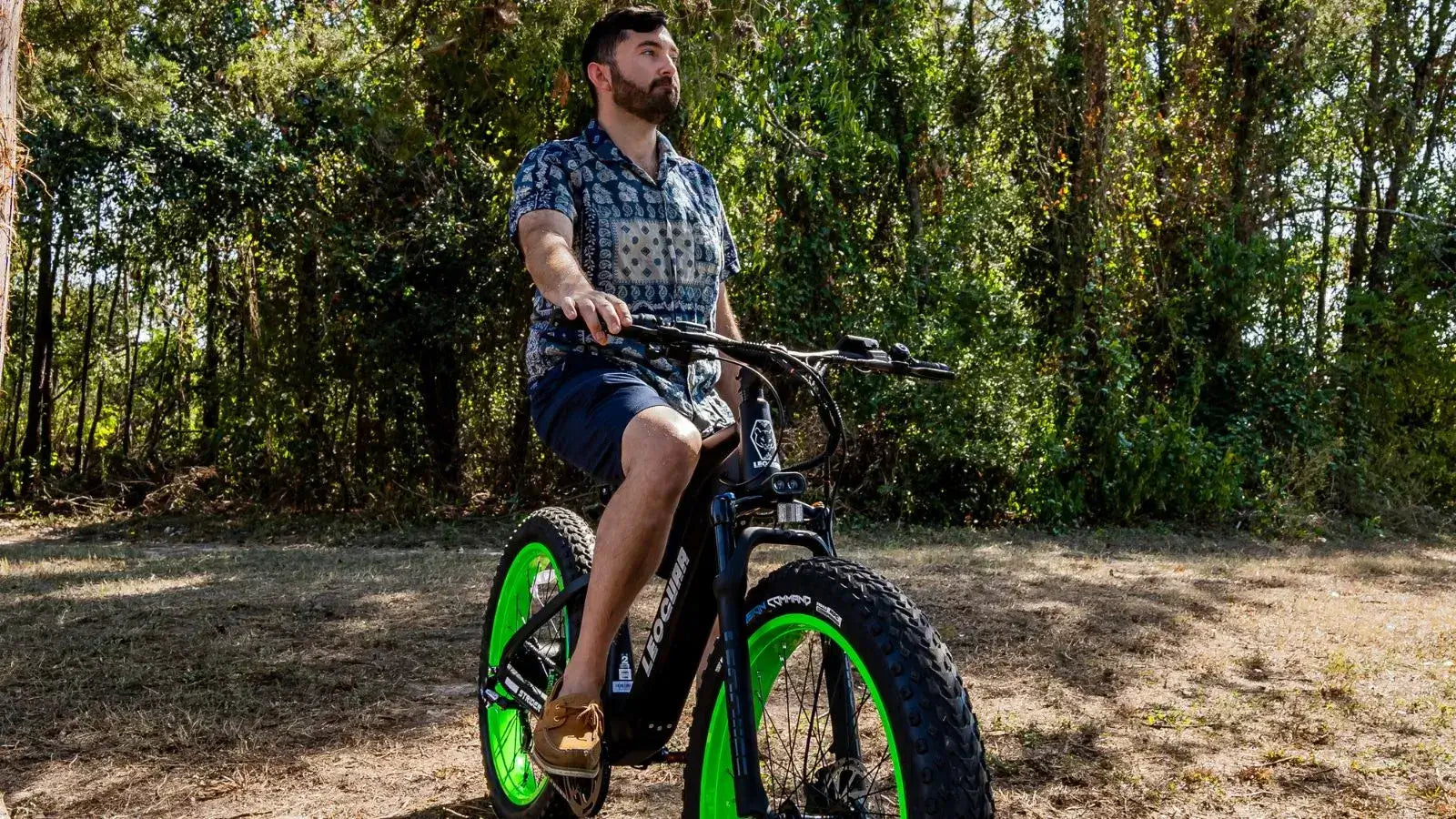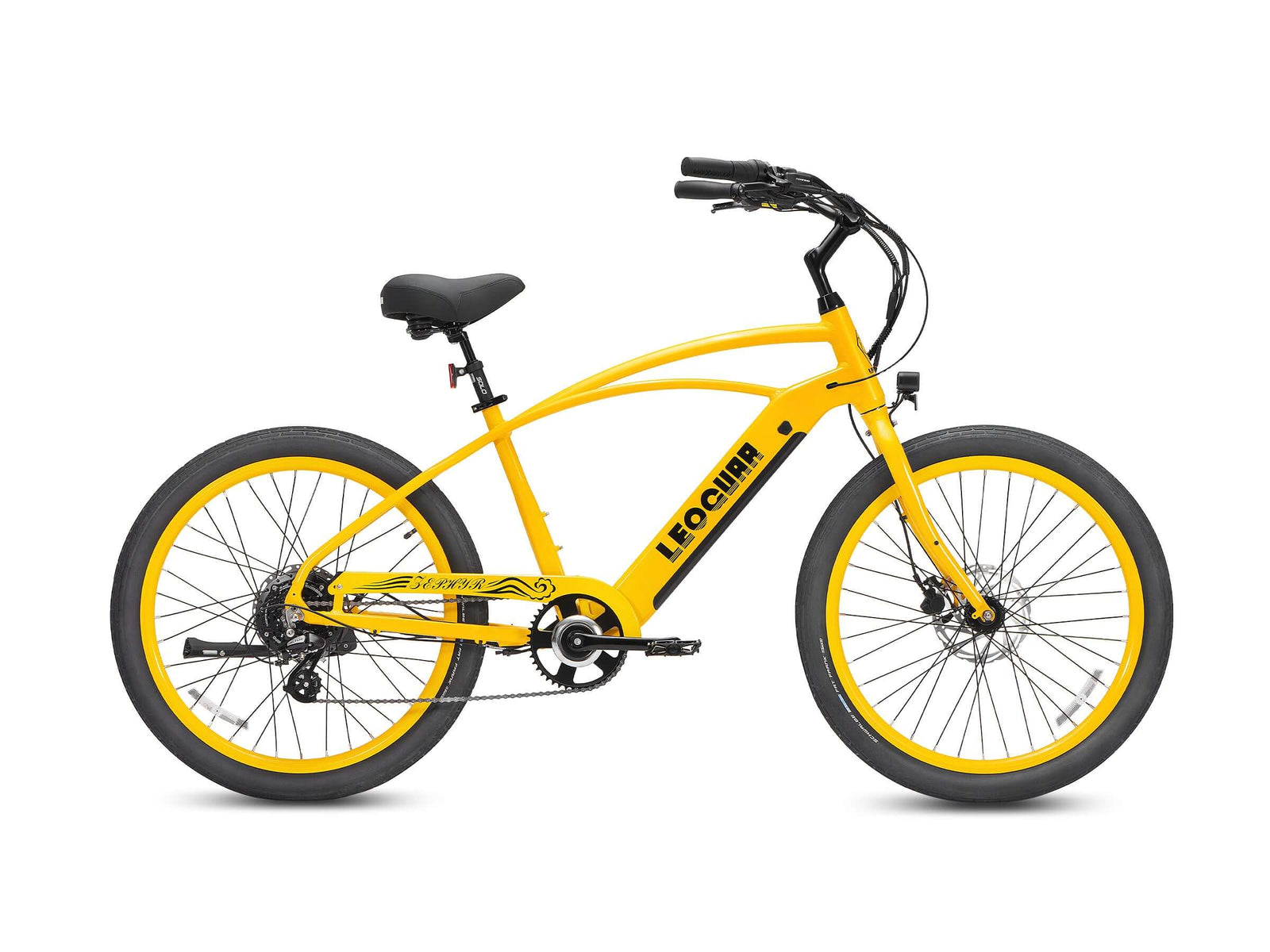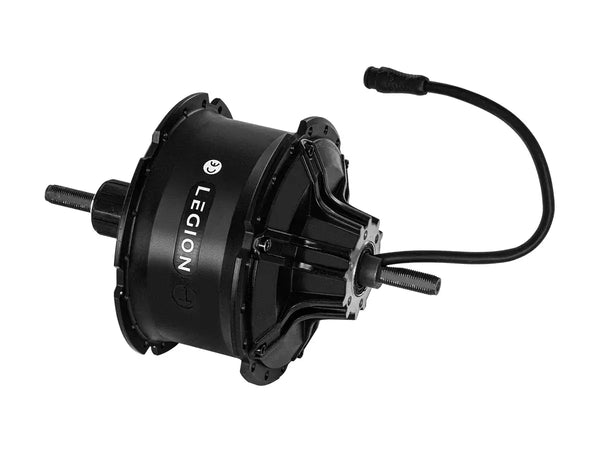
Fast Electric Bike Motor: How Fast Does 750W Really Go?
So, you're asking the big question: how fast does a 750w motor electric bike actually go? On paper, the answer is simple. Most 750W e-bikes are built to top out between 20-28 mph (32-45 km/h).
But that number is only half the story. As e-bike technicians and long-time riders, we know the speed you experience on your daily commute or weekend trail is rarely what's printed on the box. The exciting feeling of a fast electric bike motor isn't just about one number; it's about a complete system working together with you and your environment.
This guide moves beyond the marketing specs. We'll break down the real-world factors that determine your actual speed, compare the different types of fast electric bike motors, and help you decide if a 750W upgrade is truly the right choice for your needs.
On-Paper Speed Limits
To understand why 750W e-bikes have the speeds they do, we first need to look at the legal rules. In the United States, 750 watts (or 1 horsepower) is the magic number. It represents the maximum power an e-bike can have to be legally called a "bicycle" in many states, avoiding the stricter rules for mopeds or motorcycles.
This legal classification is governed by the 3-Class System, which decides the assisted speed limits. The classes are defined by the type of assist and how fast the motor will propel you.
- Class 1: The motor provides assistance only when you are pedaling and stops assisting at 20 mph.
- Class 2: The motor can be activated by a throttle without pedaling and stops assisting at 20 mph.
- Class 3: The motor provides assistance only when you are pedaling (like Class 1) but continues up to 28 mph.
Most 750W e-bikes sold today are Class 3, which is why 28 mph is the most commonly advertised top speed. Some are sold as Class 2, limiting their throttle and pedal-assist speed to 20 mph. Understanding these classes is the first step to figuring out what a manufacturer means when they talk about speed.

Beyond the Sticker Price
Now for the part that truly matters: the gap between the advertised 28 mph and the speed you'll actually hit on your ride. A powerful 750W rating is a great starting point, but it's just one variable in a complex equation. Here are the seven key factors that dictate your real-world performance.
Rider Weight and Cargo: Physics is non-negotiable. A heavier rider, or a rider carrying a full bag of groceries, requires more energy to accelerate and maintain speed compared to a lighter, unladen rider. While a 750W motor has plenty of power, a greater load will slightly reduce both your acceleration and your ability to hold top speed, especially on hills.
Terrain and Grade: This is the most obvious factor. A 750W motor will feel incredibly fast on a flat, smooth bike path, easily letting you cruise at 25-28 mph. However, take that same bike to a steep 10% grade, and your speed will naturally drop. The motor's job here isn't just top speed, but providing the power to keep you climbing efficiently, perhaps at 12-15 mph, without having to stand on the pedals.
Tires and Rolling Resistance: The tires on your e-bike are your only connection to the road, and they have a huge impact on speed. Wide, bumpy fat tires are great for grip on trails or sand, but on pavement, they create significant friction, which scrubs off speed. On the other hand, narrower, high-pressure commuter tires have a smaller contact patch and less friction, allowing you to roll faster and more efficiently on asphalt.
Battery Level: Your e-bike's battery is like a fuel tank. A fully charged battery (100%) delivers maximum voltage to the controller, allowing the motor to produce its peak power for quick acceleration. As the battery runs down, especially below 50% and more noticeably below 25%, the voltage drops. You will feel this as slightly less "punchy" acceleration and may find it harder to reach and maintain the absolute top speed.
Wind Resistance: Wind is your biggest invisible enemy. At speeds above 15 mph, the majority of your effort—and the motor's power—is spent overcoming air resistance. Riding into a steady 10 mph headwind can easily shave 5 mph or more off your top speed. Your posture also plays a huge role. Sitting upright creates a large profile that catches the wind, while a more aggressive, forward-leaning position can make you more streamlined and noticeably faster.
Motor Efficiency: Hub vs. Mid-Drive: Not all 750W motors are created equal. The type of motor and where it's placed on the bike dramatically changes how that power is delivered. This is one of the most critical factors when choosing a fast electric bike motor.
Hub Motors are located in the center of the front or, more commonly, the rear wheel. They are simple, reliable, and operate independently of your bike's gears. This design provides a "pushing" sensation and is excellent for maintaining high speeds on relatively flat ground. However, because they operate at a fixed gear ratio, they can be less efficient on very steep hills, sometimes struggling to deliver power at low wheel speeds.
Mid-Drive Motors are positioned at the bike's bottom bracket, transferring power directly to the crankset and through the bike's drivetrain (the chain and gears). This is a game-changer for efficiency. It allows the motor to use your bike's gears, just like you do. By shifting to a lower gear, you can keep the motor spinning in its optimal RPM range, delivering massive power for conquering the steepest climbs. This results in a more natural, intuitive riding feel and generally better climbing performance than a hub motor of the same wattage.
Torque vs. Watts: Finally, it's crucial to understand the difference between power (Watts) and torque (Newton-meters, or Nm). Watts primarily determine your potential top speed. A 750W motor has the power to get you to 28 mph. Torque is the rotational force that determines your acceleration and climbing ability. It's the "grunt" you feel from a standstill or when tackling a steep hill. A motor with high torque will feel much faster off the line and more capable on inclines, even if its top speed is the same as a lower-torque motor. When people talk about a motor feeling "powerful," they are often describing its torque.
750W vs. Other Motors
Is 750W the right power level for you? It depends on what you're comparing it to. A 500W motor is a perfectly capable option for many, while a 1000W motor enters a different performance class entirely. Understanding the trade-offs is key.
500W vs. 750W: A 500W motor is the workhorse of the e-bike world. It's great for general commuting, can achieve speeds of around 20-22 mph, and is typically more energy-efficient, offering slightly better range from the same size battery. The jump to a 750W motor is noticeable. You'll feel it most in acceleration and hill-climbing. It closes the gap to the 28 mph Class 3 speed limit with more authority and handles heavier loads and steeper grades without feeling strained.
750W vs. 1000W+: A 1000W (or higher) motor is a significant leap in performance. These systems deliver fierce acceleration and can, when unrestricted, push speeds well past 30-35 mph. However, this power comes with major considerations. First, they are almost universally not street-legal as "bicycles" and fall into a moped or off-road-only category. Second, they consume battery power at a much higher rate, drastically reducing range. For most riders, a 1000W+ motor is overkill and introduces legal complexities.
Here's a simple breakdown:
| Motor Power | Typical Top Speed (Assisted) | Best For | Key Consideration |
|---|---|---|---|
| 500W | 20-22 mph (32-35 km/h) | Commuting, flat terrain, maximizing range | Lacks punch for steep hills or heavy loads. |
| 750W | 20-28 mph (32-45 km/h) | All-around use, hills, faster commuting | The legal and performance sweet spot in the U.S. |
| 1000W+ | 30+ mph (48+ km/h) | Off-road, performance enthusiasts | Often not street-legal; significant battery drain. |
Is a 750W Upgrade for You?
Choosing the right power level is about honestly assessing your needs. More power isn't always better if it doesn't match your riding style. You should upgrade to (or choose) a 750W motor if: Your current 500W bike struggles on the hills in your area. You regularly carry heavy cargo, groceries, or a child in a seat. Your commute requires keeping pace with urban traffic that moves between 20-28 mph. You crave that thrilling, confident acceleration away from a stoplight.
You might be better off with a 500W motor if: You prioritize maximum battery range above all else. Your rides consist mainly of flat, dedicated bike paths. You are a lightweight rider and don't carry heavy loads. Your local regulations are stricter than the common U.S. 3-Class system.

The Final Verdict
While a 750W electric bike is legally capable of reaching speeds up to 28 mph, your real-world experience will be a dynamic number influenced by terrain, load, battery, and even the wind. It represents a fantastic balance of power, speed, and legal compliance, offering a significant performance boost over 500W models without the legal and practical drawbacks of 1000W+ systems.
The search for a fast electric bike motor should go beyond a single number. Consider whether the instant torque of a mid-drive for climbing hills is more important to you than the simple, high-speed cruising ability of a hub motor. A 750W motor gives you the power, but how you use it is what defines the ride. If possible, test ride different systems. Ultimately, the best motor is the one that feels right for the roads you ride every day.
Frequently Asked Questions
1. Q: What is the real-world top speed of a 750W e-bike?
A: Most 750W e-bikes can reach 20-28 mph depending on their class rating. However, your actual speed will vary based on factors like rider weight, terrain, battery level, wind conditions, and tire type.
2. Q: Is a 750W motor better than a 500W motor for hills?
A: Yes, a 750W motor provides more power for climbing hills and handling heavy loads. You'll notice better acceleration and less strain when going uphill compared to a 500W motor, especially if you're a heavier rider or carry cargo.
3. Q: Are 750W e-bikes legal to ride on public roads?
A: In most U.S. states, 750W e-bikes are legal when they comply with the 3-Class system. Class 1 and 2 are limited to 20 mph, while Class 3 can go up to 28 mph. Always check your local regulations as laws vary by location.
4. Q: How does battery level affect the speed of my 750W e-bike?
A: As your battery depletes, especially below 50%, the voltage drops and you'll notice less powerful acceleration and difficulty maintaining top speeds. A fully charged battery delivers the motor's peak performance.
5. Q: Should I choose a hub motor or mid-drive motor for my 750W e-bike?
A: Hub motors are simpler and great for flat terrain and high-speed cruising. Mid-drive motors are more efficient for hills and varied terrain because they work with your bike's gears. Choose based on your riding conditions and preferences.









































Leave a comment